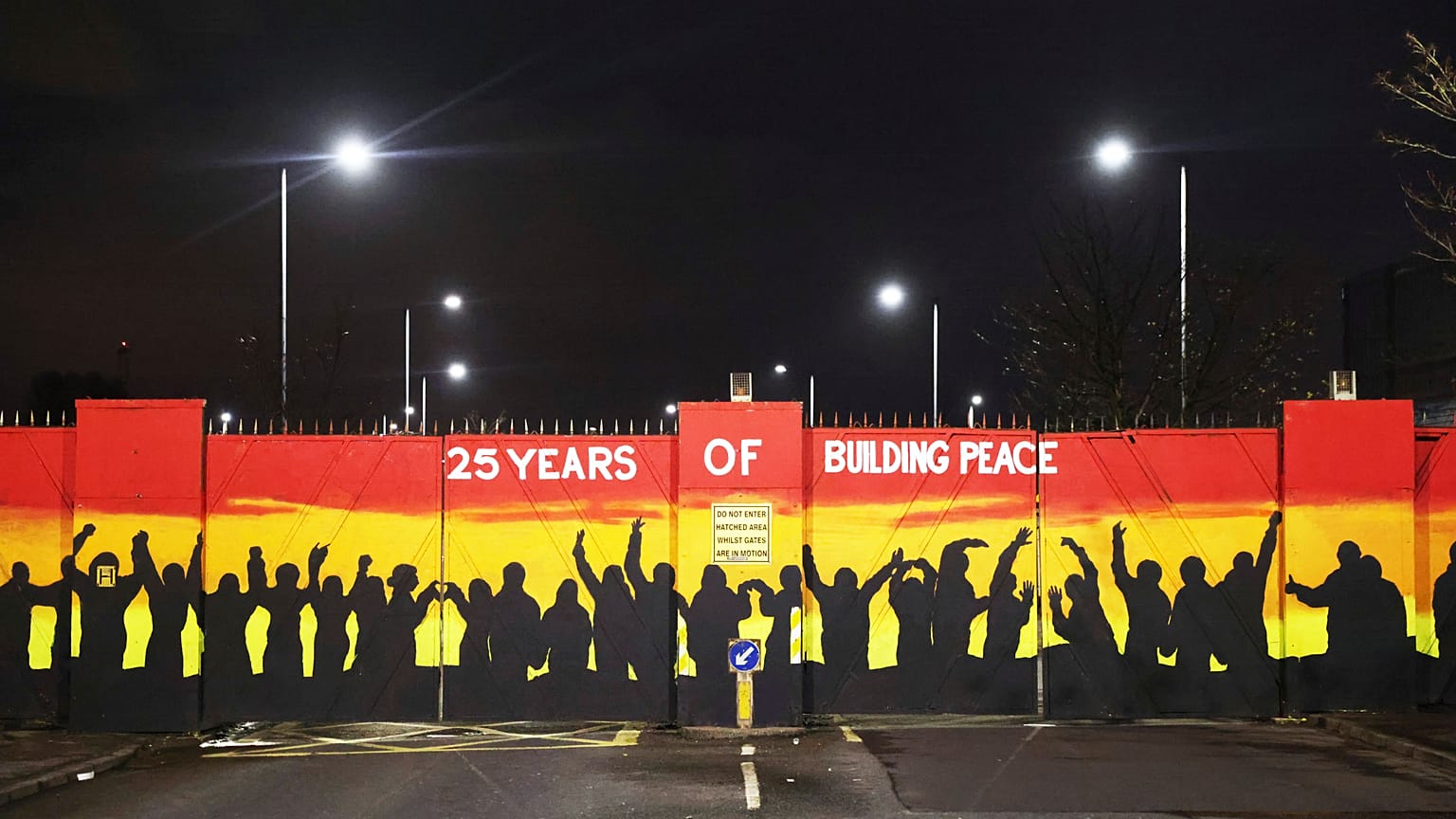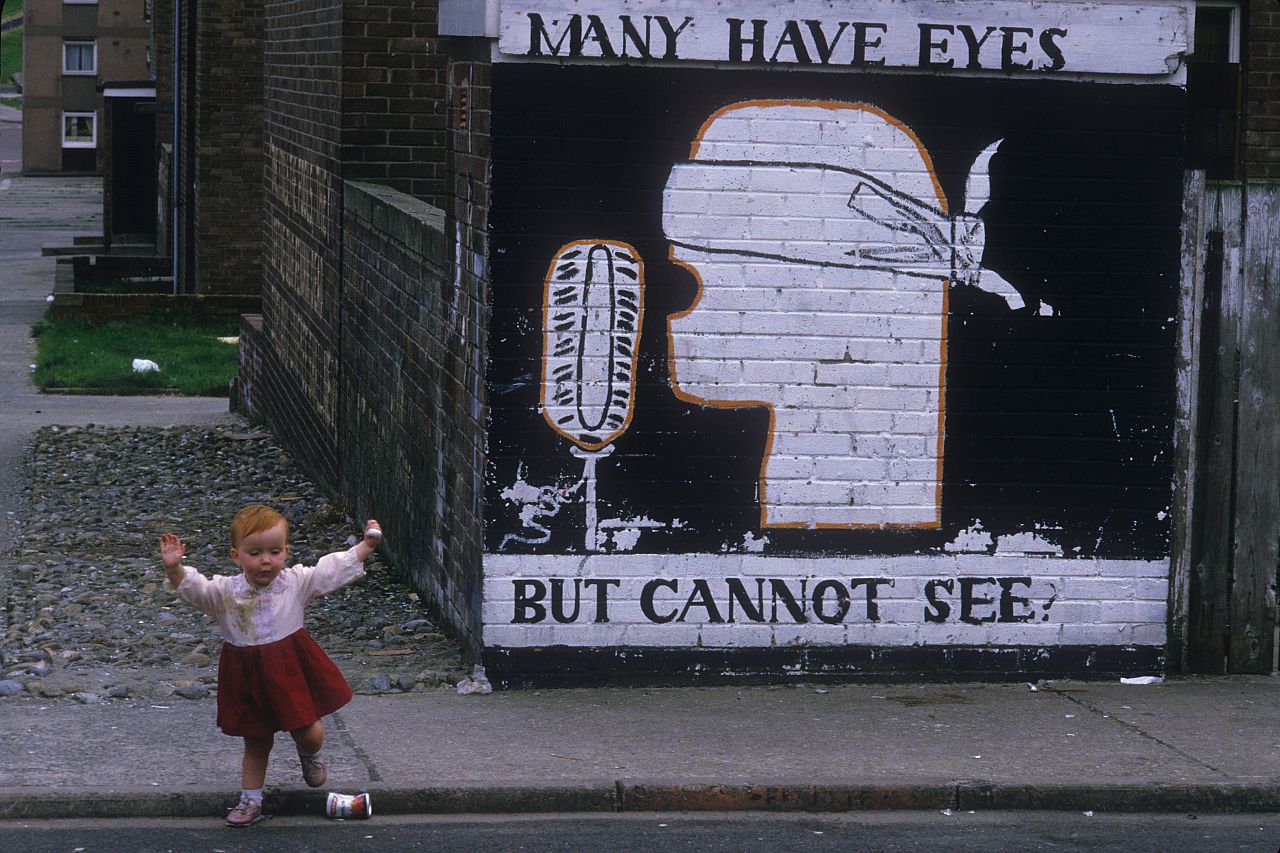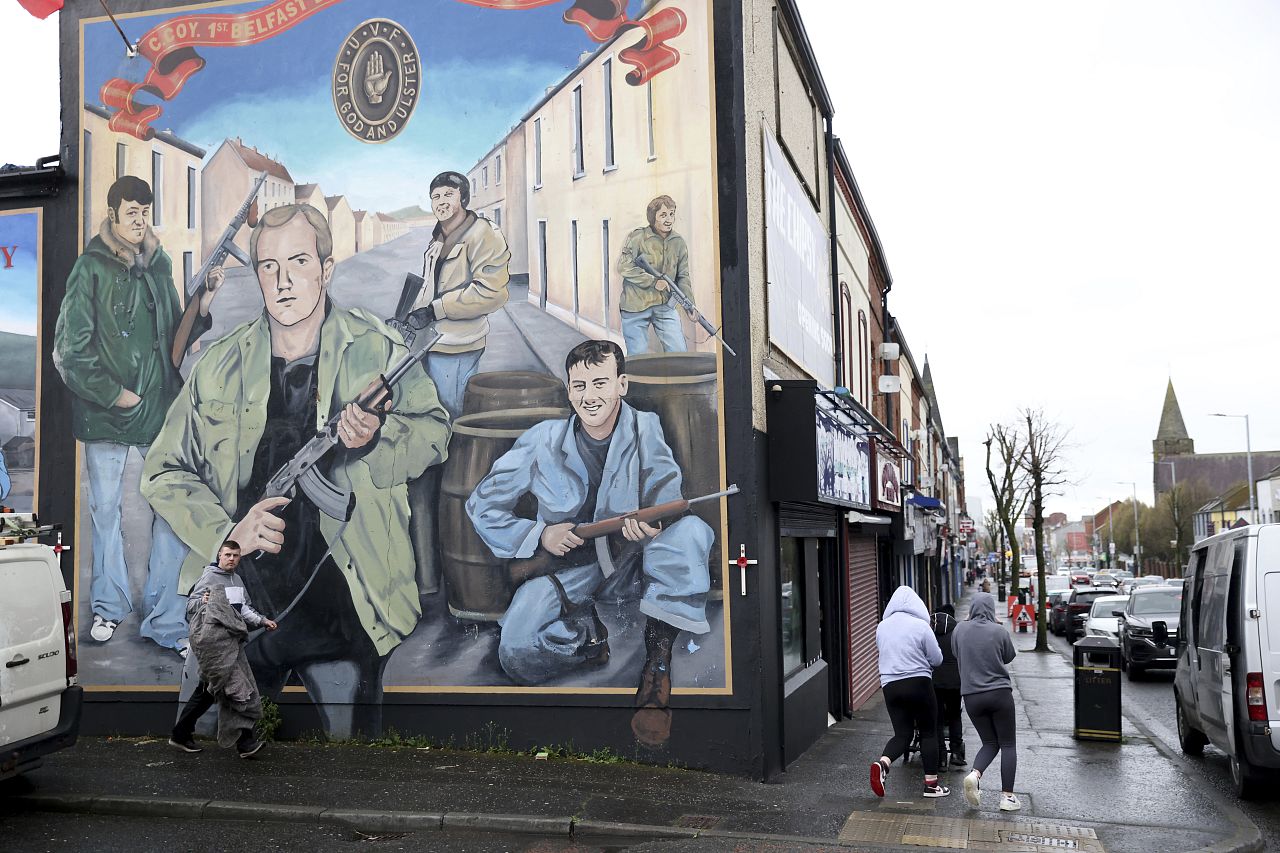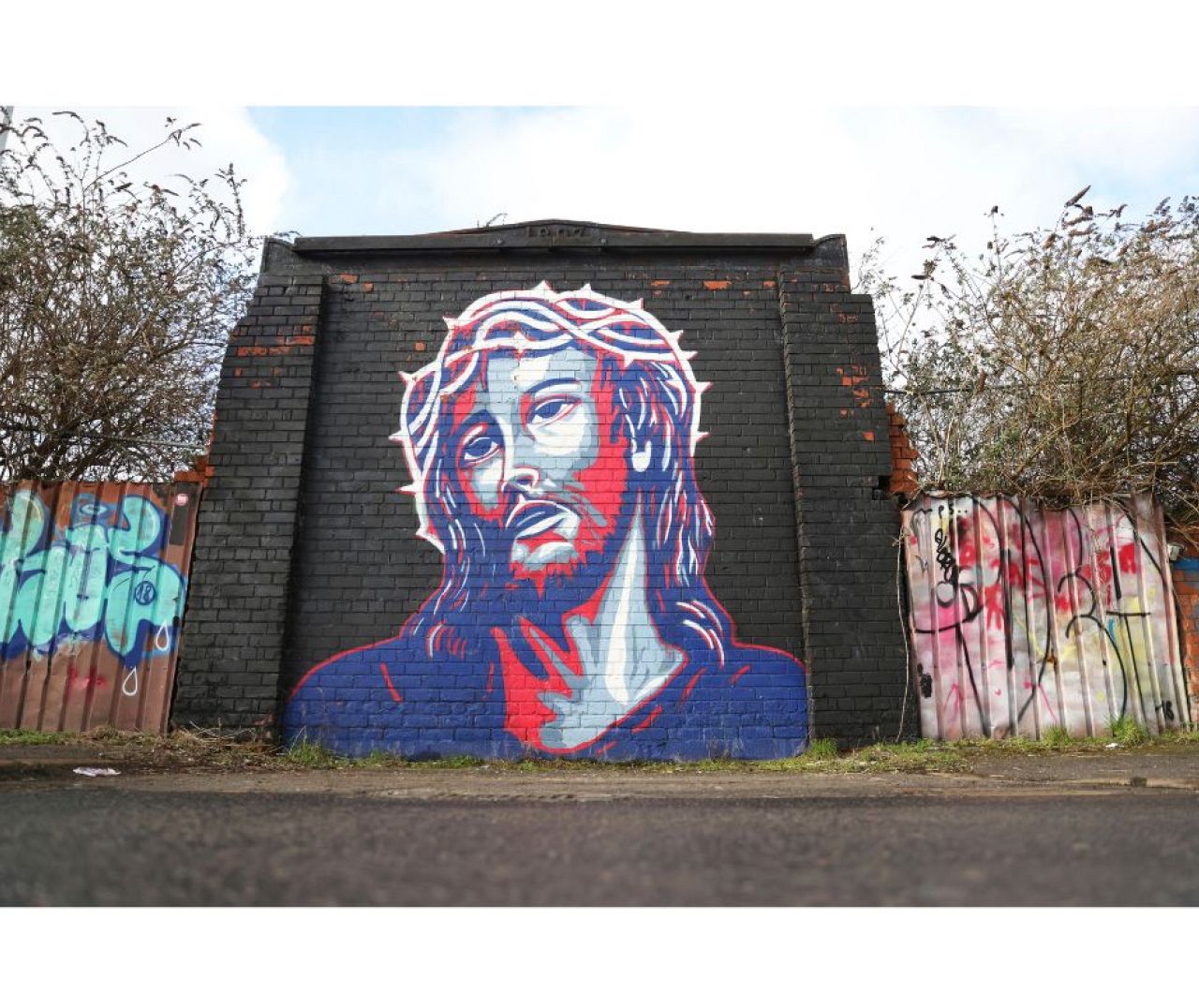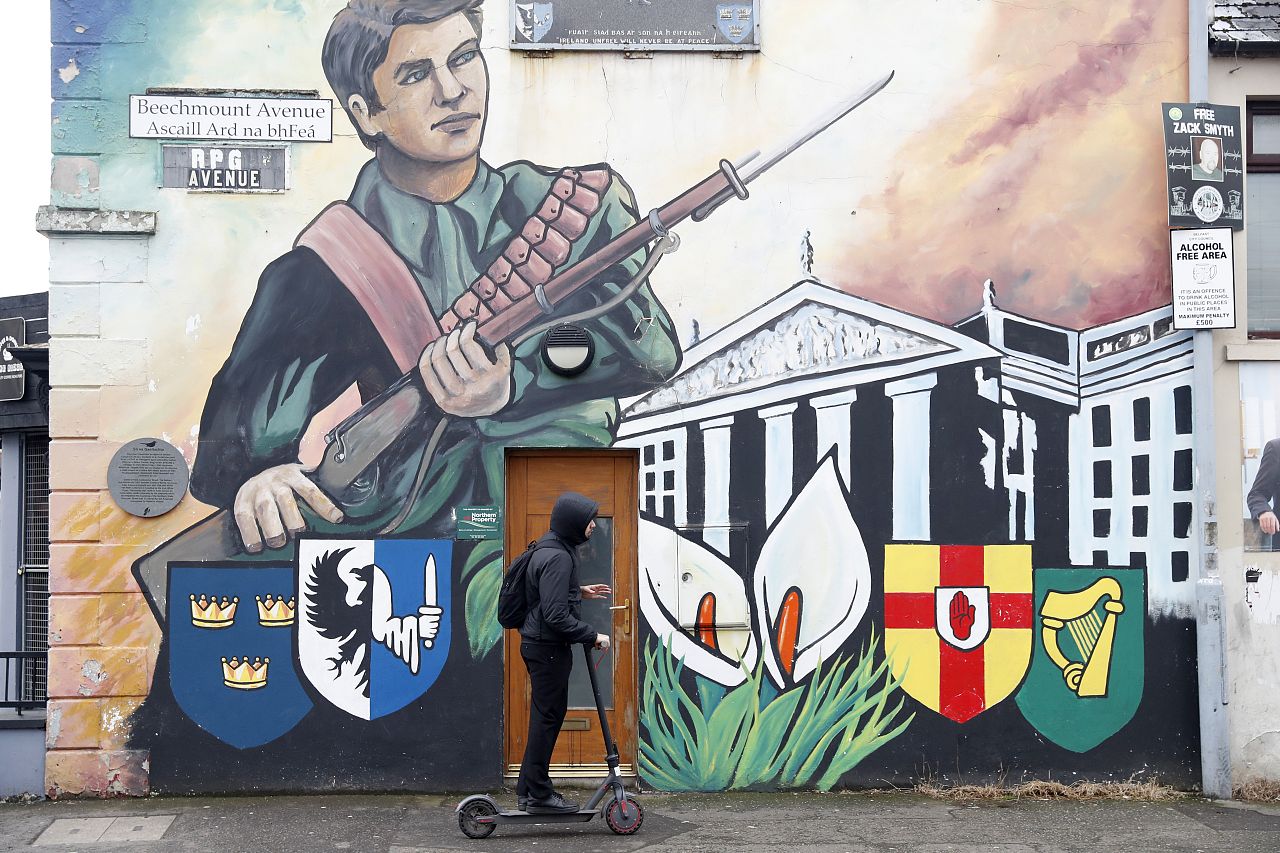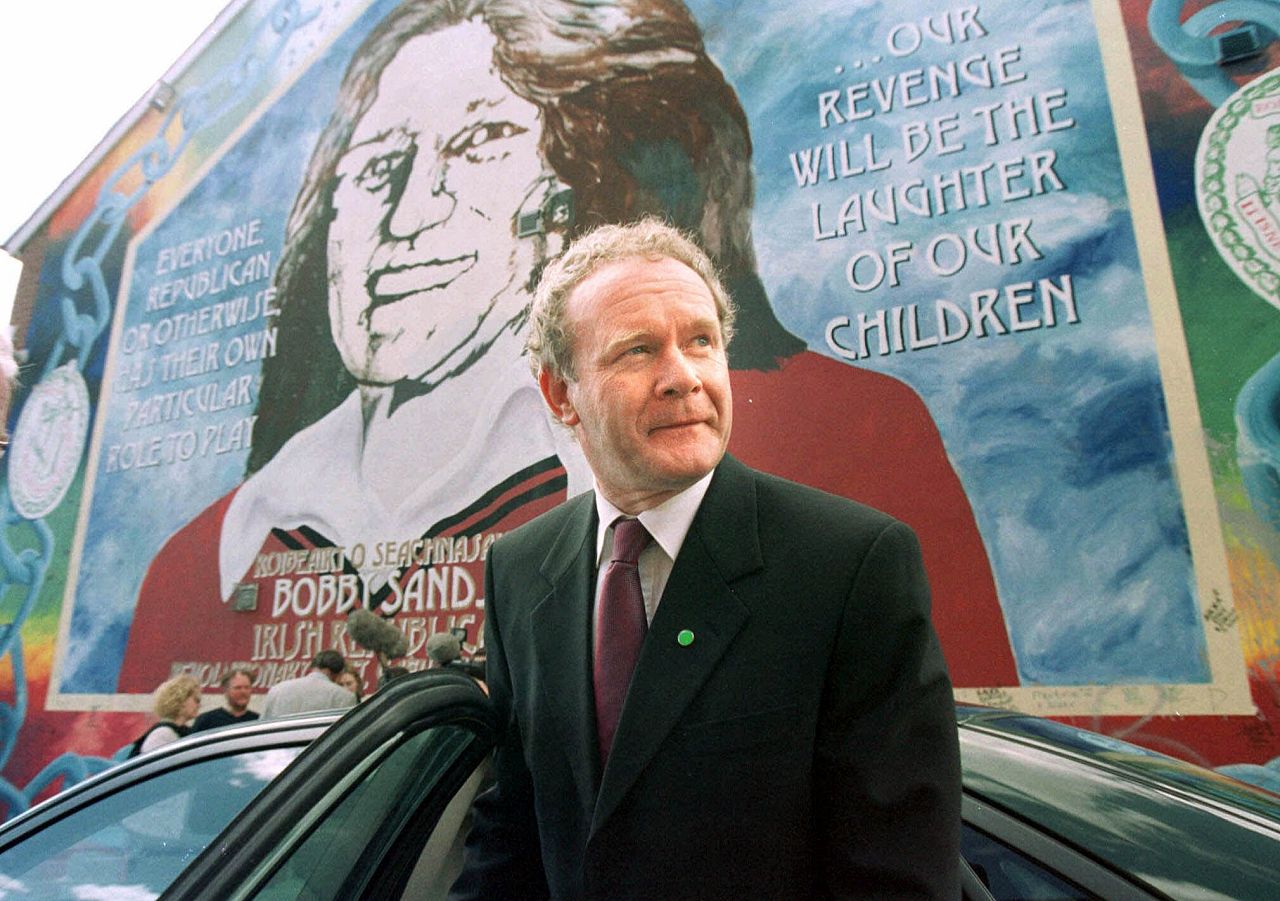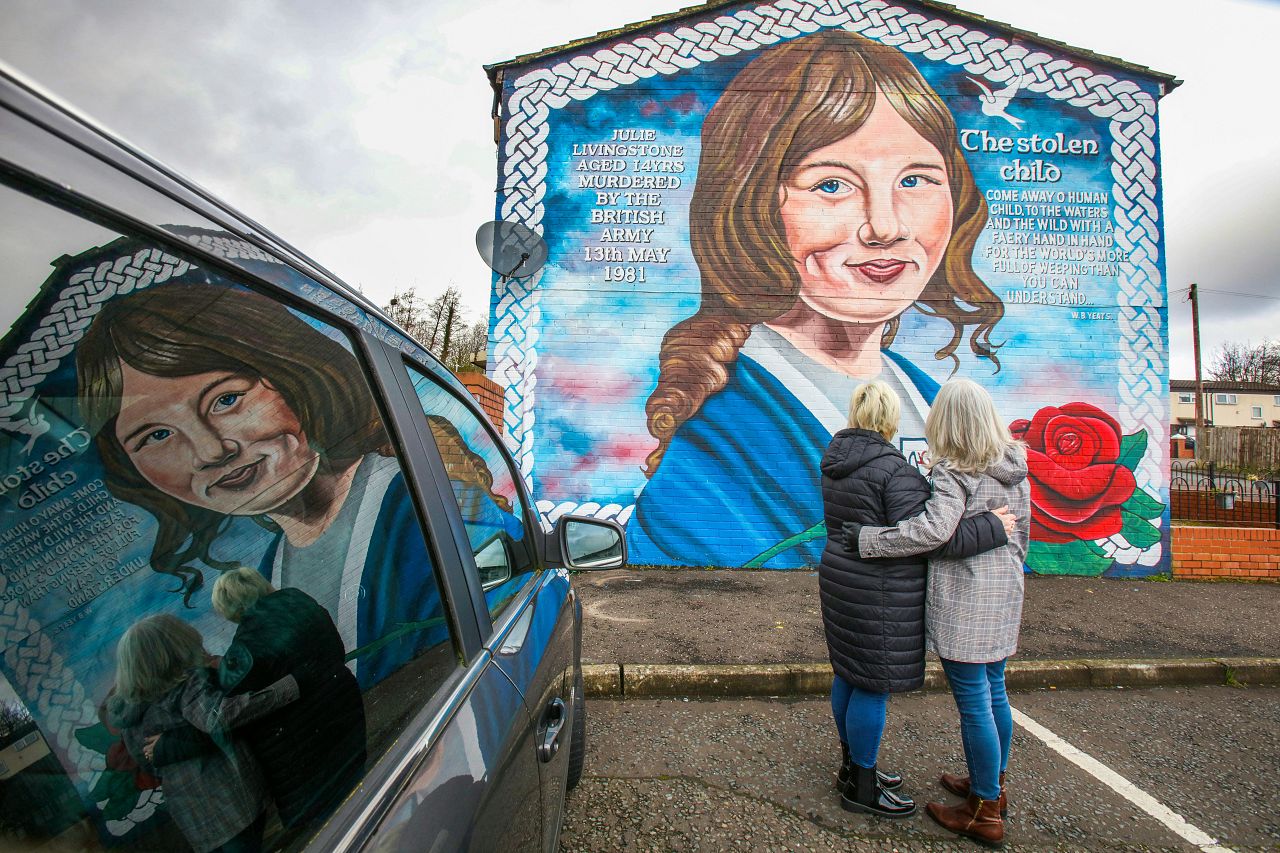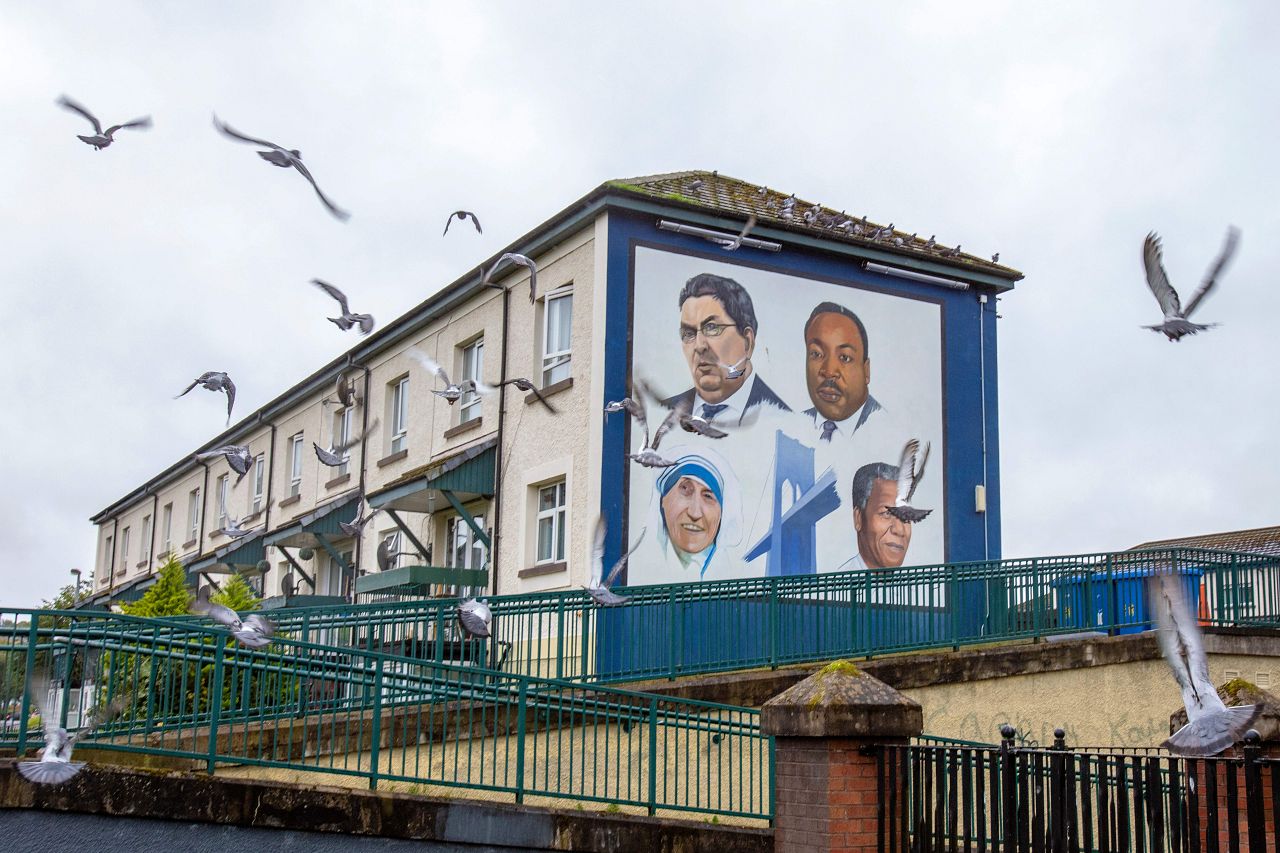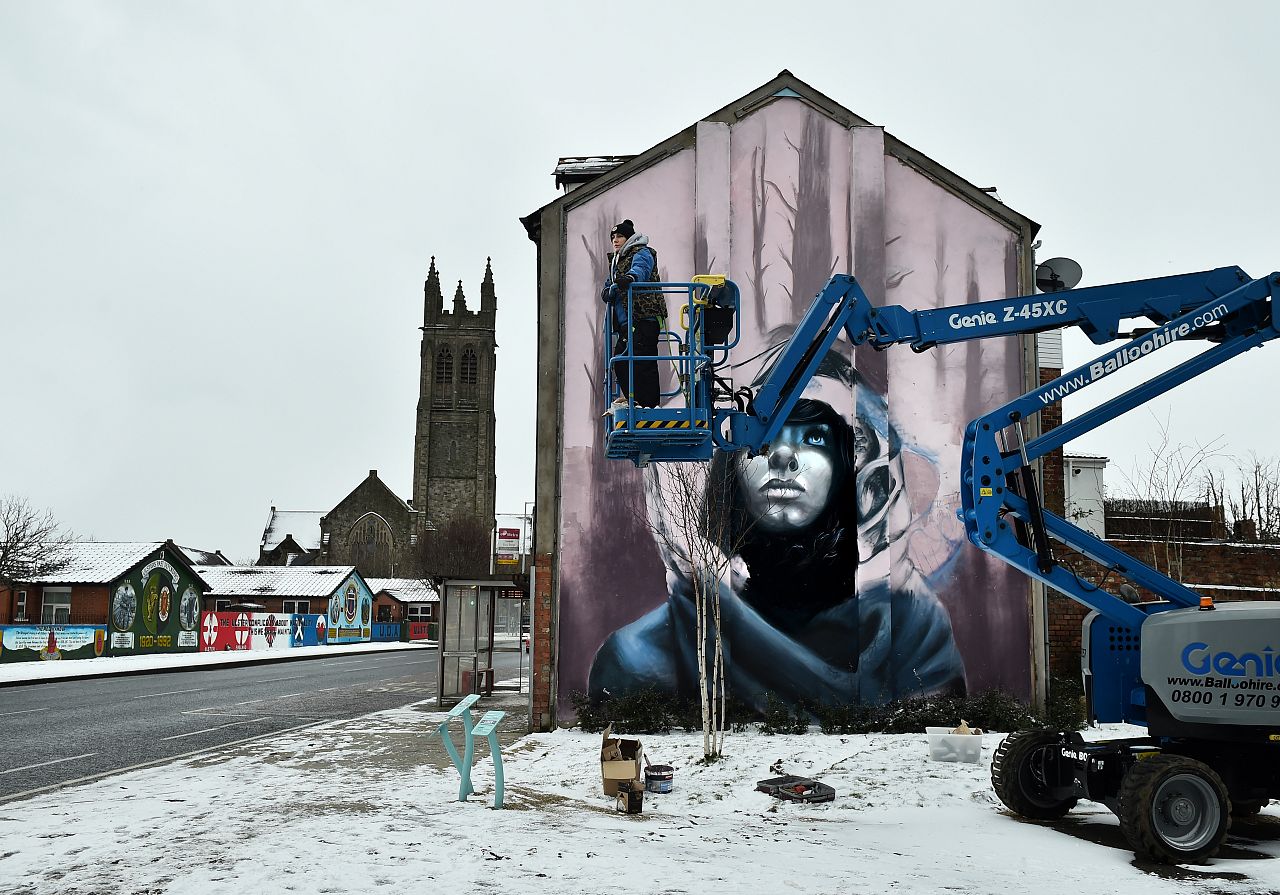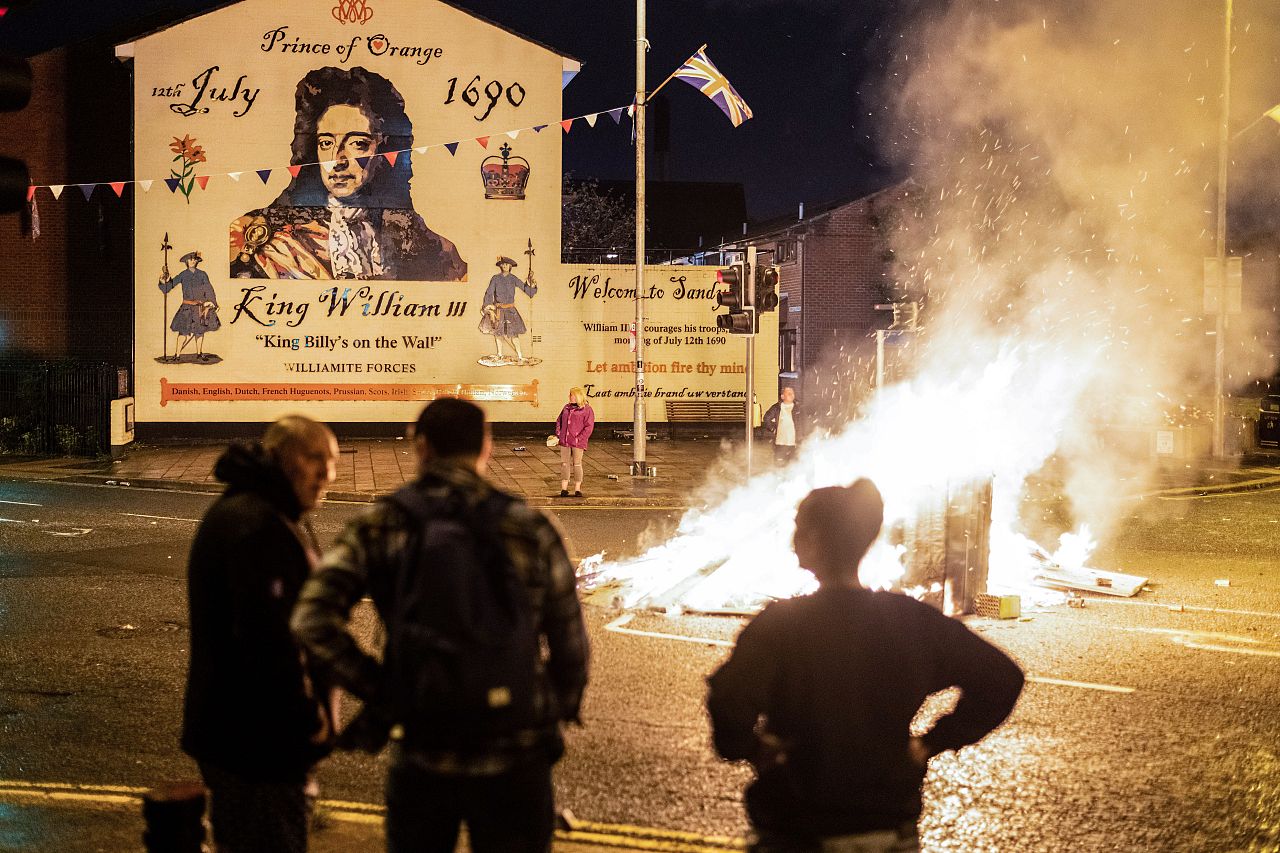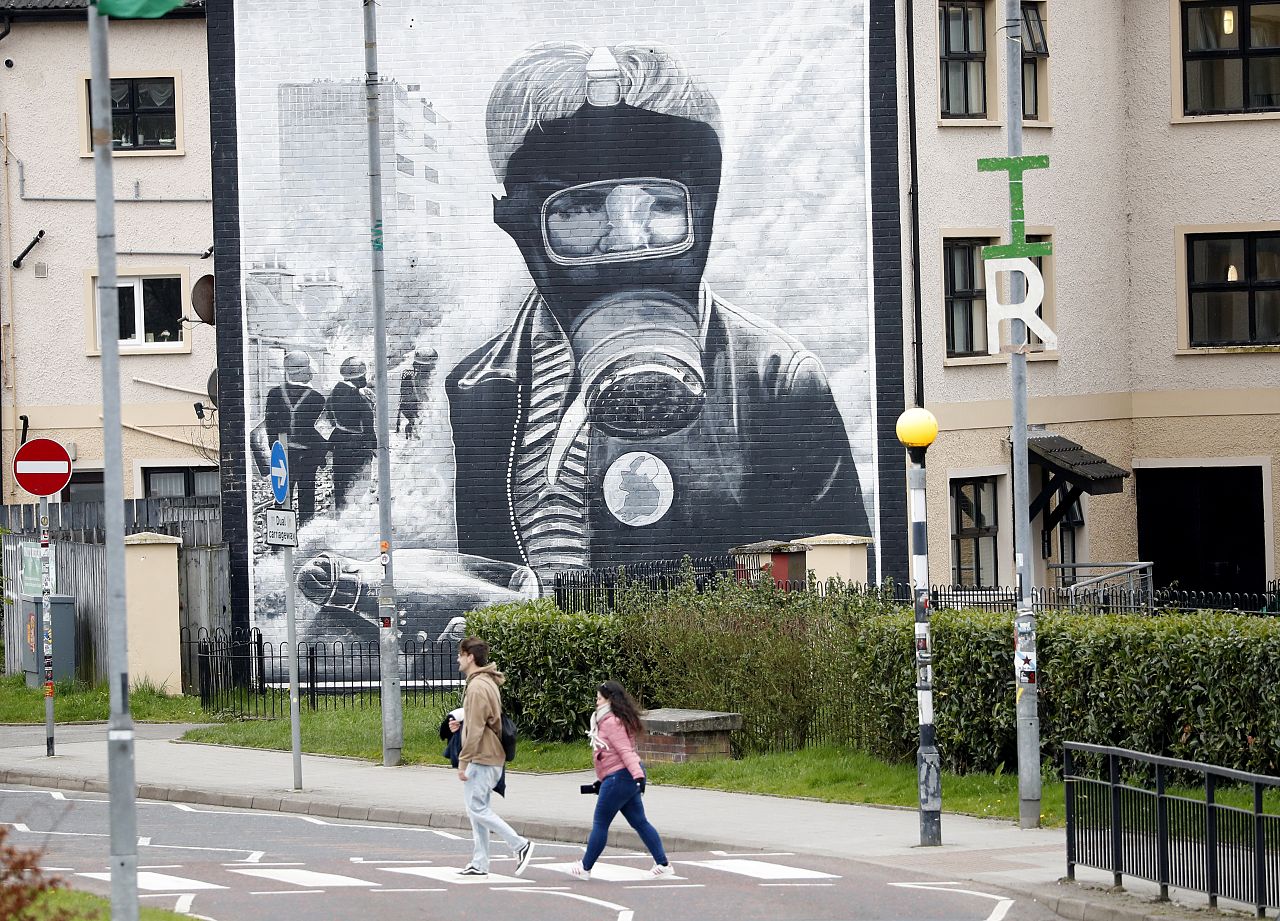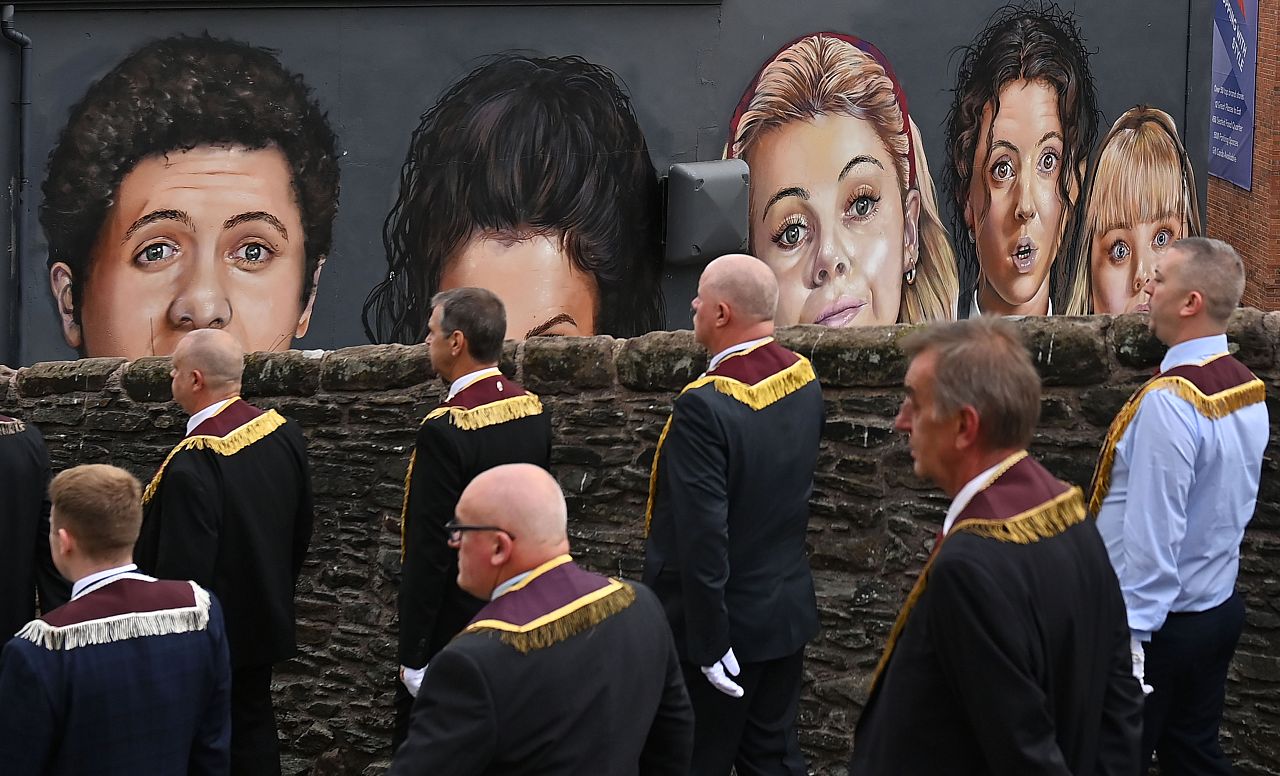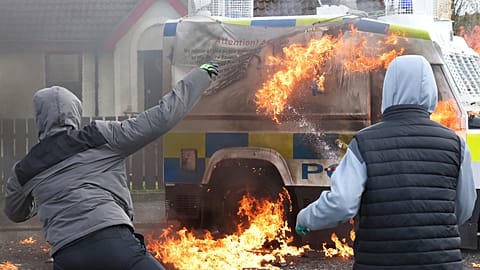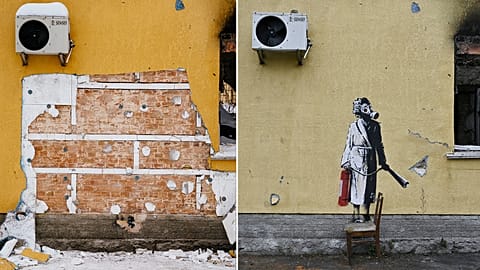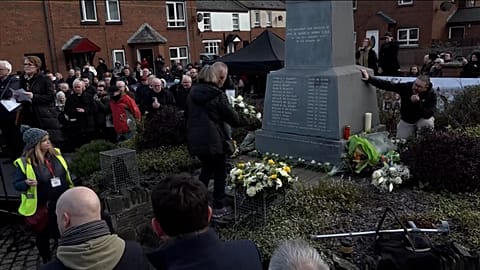A look at Northern Ireland's iconic murals - 25 years after the Good Friday Agreement
Friday 7 April marks the 25th anniversary of the Good Friday agreement. Euronews Culture takes a look at some of the most impactful and iconic murals across Northern Ireland.
Friday 7 April marks 25 years since The Good Friday Agreement (GFA) or Belfast Agreement - a pair of agreements signed on 10 April 1998 in the Northern Irish capital.
The GFA put an end to much of the violence of the Troubles, a long-running political conflict in the country which had been raging since the late 1960s, leaving more than 3,600 people dead. It marked a major development in the Northern Ireland peace process of the 1990s and is made up of the British–Irish Agreement between the British and Irish governments and Multi-Party Agreement between most of Northern Ireland's political parties. The country’s current system of devolved government is based on the GFA.
While Northern Ireland is still somewhat divided, with British intelligence agency MI5 raising the terrorism threat level just last month from substantial to severe, today Euronews Culture is taking a look at some of the most iconic murals from across the country.
Murals in Northern Ireland have become symbols of the country with many depicting past and present political and religious divisions. The cities of Belfast and Derry alone contain arguably the most famous political murals in Europe.
There have been approximately 2,000 murals created since the 1970s in Northern Ireland, all of which commemorate or communicate specific aspects of culture and history and reflect what is important to a particular community. This can range from the Troubles to iconic TV series Derry Girls…
In this photo from 1985, a little girl crosses the street in front of a mural criticising the media in a Catholic, residential area of Derry.
A loyalist mural is pictured on a wall in west Belfast on Wednesday (5 April) ahead of the 25th anniversary of the Good Friday Agreement.
A photo taken in January this year of a mural depicting Jesus Christ close to the peace lines in west Belfast. As the city commemorates 25 years since the Good Friday Agreement, grassroots faith leaders are trying to unite Catholics and Protestants, working towards reconciliation in a country where religion has been central to conflict.
In March this year, a man rides a scooter past an old Irish republican mural commemorating the 1916 Easter Rising in West Belfast. The photograph was taken as intelligence service MI5 raised the terrorism threat level in Northern Ireland to 'severe', amid an increase in activity by dissident Irish republican militants.
In this photo from 2001, late Irish Republican Army commander commander Martin McGuinness is pictured in front of a mural of Bobby Sands on the Falls Road in West Belfast. This mural is one of the most famous in all of Northern Ireland. Bobby Sands died aged 27 after the 1981 Irish hunger strike, a showdown between Irish republican prisoners and then British Prime Minister Margaret Thatcher after her government withdrew Special Category Status (meaning prisoner of war rather than criminal status). Sands was elected as a member of parliament during the hunger strike but he and nine others starved to death while imprisoned. His funeral was attended by 100,000 people.
Sisters Bernadette and Elizabeth pose in front of a mural tribute to their late sister Julie Livingstone in Belfast. Julie was killed aged 14 years old by a plastic bullet fired by the British Army in 1981.
A 2020 photograph taken in Derry of a mural depicting John Hume and other other Nobel Laureates, Martin Luther King Jr, Mother Teresa and Nelson Mandela, ahead of the funeral of Northern Irish politician John Hume. Hume died on 3 August 2020 after spending years campaigning tirelessly for peace in Northern Ireland and earned a joint Nobel Prize for his efforts.
Pictured here in 2018, Joy Gilleard - one half of the street art duo Nomad Clan - who works on a mural on the Newtownards Road in Belfast. It portrays a woman resembling a flax gatherer from a bygone era and runs alongside a line of loyalist murals known as 'Freedom Corner'. The aim of the mural is to symbolise the energy and life that the flax industry once gave to the capital city.
This photo from 2021 shows a fire lit in the middle of the street in front of a mural depicting William of Orange in South Belfast. July 11th or 'Eleventh Night' sees bonfires lit at midnight around Northern Ireland to celebrate 'Orangemen's Day' (12 July). It's an Ulster Protestant celebration held annually which also sees marches across the country. The mural depicts William of Orange or ‘King Billy’ to the Northern Irish. He was the king of England and Protestant ruler who waged war against Catholic rulers in the late 17th century.
Taken on 3 April, people walk past a mural depicting the Battle of the Bogside on a wall in Derry. The Battle was a three-day riot in 1969 in which Catholic Irish nationalists from the Bogside district clashed with the Royal Ulster Constabulary and loyalists. It sparked widespread violence across the country and led to the deployment of British Troops, marking the beginning of The Troubles.
In 2021, a parade of the Apprentice Boys of Derry took part in the annual Relief of Derry march, passing by the iconic Derry Girls mural. The parade marks the lifting of the siege of Derry which began in December 1688 when 13 apprentice boys closed the gates of the city against a regiment of twelve hundred Jacobite soldiers, commanded by the Roman Catholic Earl of Antrim, Alexander MacDonnell. The mural itself is a light-hearted tribute to popular TV show Derry Girls, which ran from 2018 to 2022 and followed the lives of teenagers growing up in the 1990s during The Troubles.














